Tarp shelters can be very effective and comfortable, or they can be miserable.
Here is how to choose the right-sized tarp to keep from getting wet when rain water drips off the edge and into the shelter.
by Leon Pantenburg
Considering a tarp for making wilderness shelters? Make sure you get one that’s big enough.
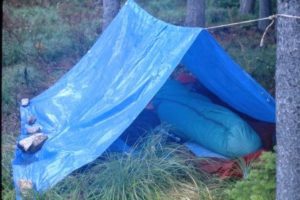
This shelter kept my brother and me dry during a long, rainy afternoon and night.
When my brother Mike Pantenburg met me at our rendezvous point on that Idaho ridge, the weather gods promised rain – a lot of it, and coming hard and fast.
We had spent the afternoon chasing elk in the backcountry ravines, and were miles from the nearest road. We were backpacking, and for shelter, there were two blue plastic tarps. Within a few minutes, we rigged up an A Frame tarp shelter, and then the storm hit. It rained steadily for the next 15 hours, but we were dry and comfortable under the tarp. In fact, our hasty shelter was probably more comfortable than a tent could have been.
One reason the shelter worked was that the tarp was large enough to give us a two-foot buffer zone at each end. The other reason was was that we carefully figured the drip zones from the trees. The tarp was situated so the tree drip lines hit about a foot or two from the tarp ends toward the middle of the fabric. The result is that our sleeping bags and gear stayed completely dry.
In many photos of tarp shelters, the people underneath are shown right next to the edge. This is a mistake, and that shelter is not going to stay dry. (It is easier to photograph this setting, and makes lighting less difficult.) While the advertising or graphic designer people think this looks good, that shelter will be miserable when the rain starts. The rain will drip off the edge and splash inside the tarp. (That’s why it’s called a splash zone!) If there is a high wind, the water will blow underneath.
The basic tenet is that people choose tarps that are too small. Remember, the area around the edge is a splash/blow-in (or wet) zone that is always wet in a rain storm and even worse in a high wind.
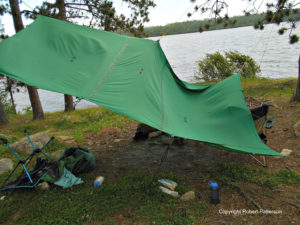
Most people buy tarps that are too small. The splash zone around the edges cuts back on the coverage.
One of the most experienced tarp campers I know is my old roommate from Iowa State University, Bob Patterson (check out his creds below.)
There are a variety of tent materials to choose from, and each has advantages and disadvantages. So how big should your tarp be? A good rule of thumb is to decide what size tarp will meet your needs, then get the next largest. Here is what Bob uses.
“I consider 12-foot by 12-foot the absolute minimum for two people and have often taken my 12-foot by 16-foot on solo trips,” Bob said. “It’s a great comfort when the weather turns bad and you’re going to spend a lot of time under it.”
What about that splash/blow-in zone around the edges? The higher you pitch the tarp, Bob commented, the larger this zone is. For practical purposes, unless the tarp is right down on the ground, figure on a wet zone of about two feet.
“In a really kicking storm, I like to stake the leading edge right down to the ground, or even lay a log on it.,” he added. “That eliminates what is usually the largest wet splash/blow-in zone.” (Learn how to keep the corners from ripping out in heavy winds.^^^)
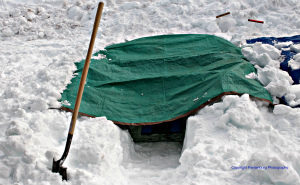
This snow trench shelter was warm and cozy, even though the outside temperatures were in the single digits.
Depending the circumstances, a tarp can be the most effective shelter tool.
A larger tarp works really well to make an emergency snow shelter. Sometimes, the quickest way to make a shelter in deep snow is to dig a trench, and cover it with a tarp. Tent poles, skis or branches support the roof of the tarp shelter. Inside, the trench will be cozy.
In this situation a larger tarp shines. The snow weight on the edges can help reinforce the supports, even if it snows. If the tarp is too small, the trench shelter will not work very well.
I probably have too many tents, if such a thing is possible. These tents are used as the situation and environments dictate. But I always have a tarp in my pack on every hike.
A word of caution: Tarp shelters are not mosquito or snake proof. If you camp where there are crawly things that bite, get a snakeproof tent or a jungle hammock. Choose all your survival gear with care.
Robert Patterson is on my short list of people to go into the wilderness with. Bob is a skilled outdoorsman, an avid deer hunter, and for more than two decades, has done an annual solo, two-week canoe trip in the Boundary Waters Canoe Area Wilderness.
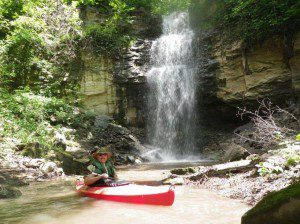
Bob Patterson kayaking at a waterfall on the Blue Earth River, Minnesota.
His career choices make Bob a great guy to review gear. A retired firefighter and first responder, Bob was also an EMT, and his job required he be out in all sorts of nasty, cold Minnesota weather. (Bob knows his foul weather gear and is my go-to guy for questions about winter camping, rain gear or other survival clothing !)
Bob is also a retired member of the National Ski Patrol, and a certified rope rescue instructor.

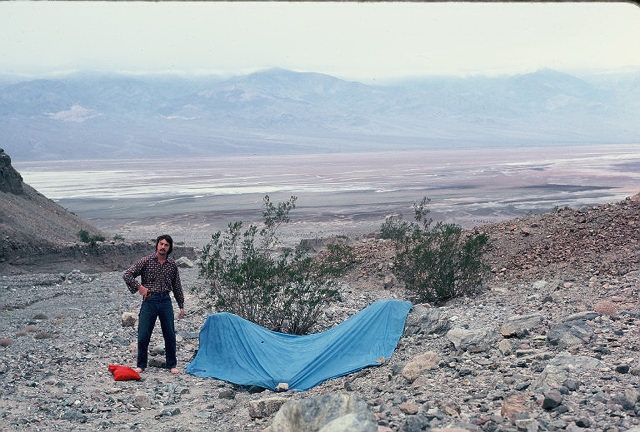

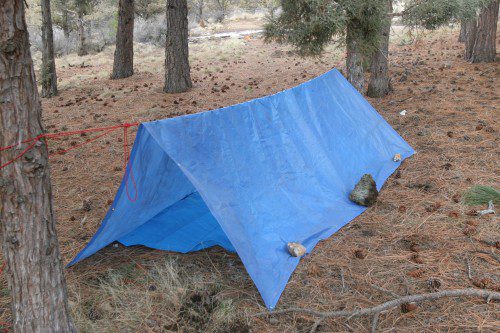
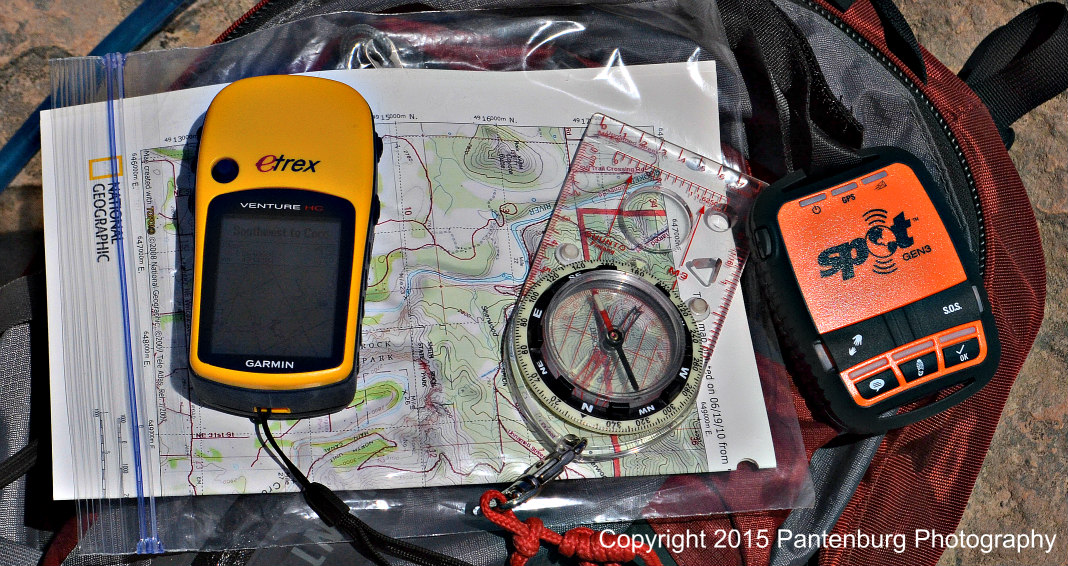
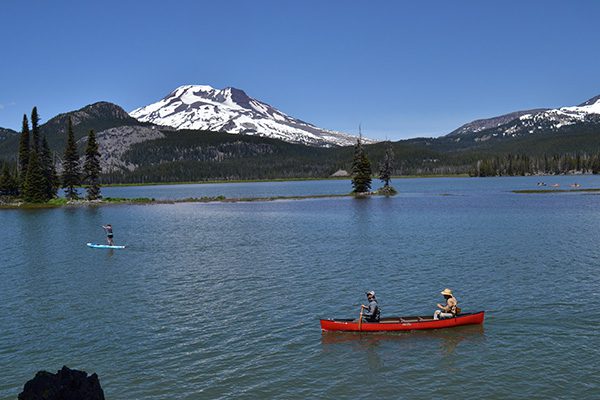
Leave a Reply